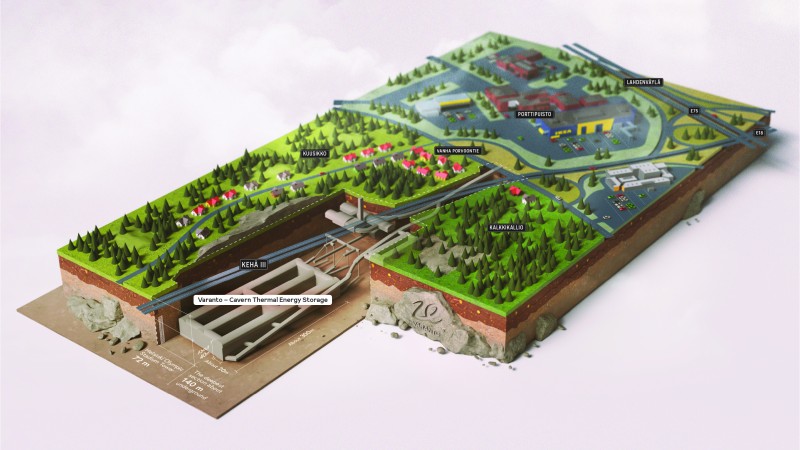Waste Heat Warms Finnish City

Underground caverns in Finland are being utilized for a groundbreaking seasonal energy storage initiative. This facility near Helsinki, set to become the world’s largest, will store heat during the summer for later use in the winter, providing enough thermal energy to heat a medium-sized city.
Systems like underground thermal exchange heating and domestic heat pumps are viewed as highly effective in reducing the environmental impact of heating and cooling. These systems operate by harnessing natural forces or recycling energy to regulate water temperature, which is then used to provide heating or cooling to buildings.
In Vantaa, neighboring Helsinki, the Varanto project aims to store excess heat from data centers, cooling processes, and waste-to-energy facilities underground. This stored heat will be tapped into during colder months to heat buildings via the district heating network.
The scale of Varanto is immense, with underground caverns equivalent to two Madison Square Gardens filled with water heated by waste heat. This innovative approach enables water temperatures to reach up to 300 degrees Fahrenheit without boiling or evaporating.
According to Vantaa Energy CEO Jukka Toivonen, the Varanto project addresses a critical challenge in the energy transition by providing large-scale storage solutions for intermittent renewable energy sources like wind and solar power. The project, supported by an investment grant from Finland’s Ministry of Economic Affairs and Employment, is poised to set a global example.
The fully charged storage capacity of 90 gigawatt-hours could sustain a medium-sized Finnish city for a year, equivalent to 1.3 million electric car batteries. To complement renewable electricity, the project includes the installation of 60-MW electric boilers, offering flexibility and efficiency in heat production.
With construction slated to begin in 2024 and operational targets set for 2028, district heating remains a cornerstone of Finland’s heating infrastructure, with Vantaa boasting extensive underground networks serving the majority of its residents. In 2023, Finland produced 37.3 terawatt-hours of district heat, with over half sourced from renewable and waste heat.